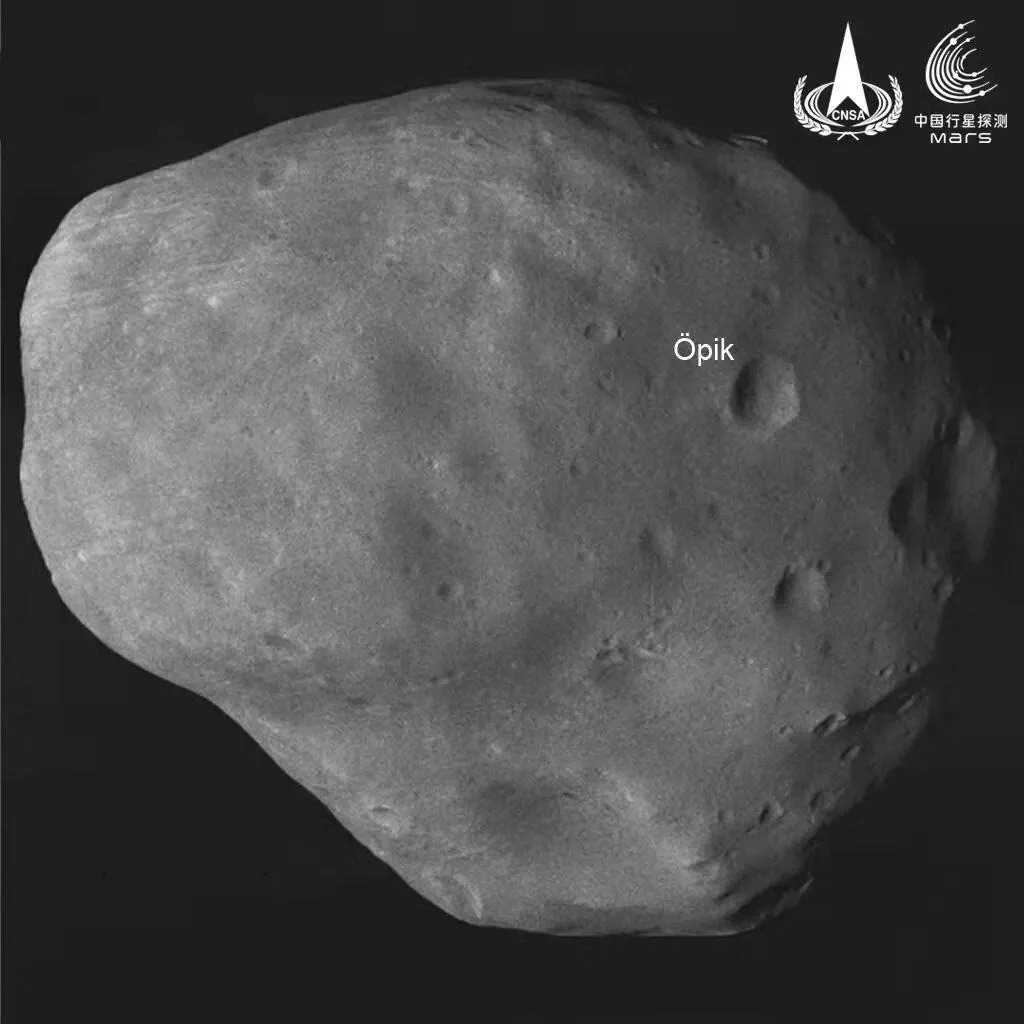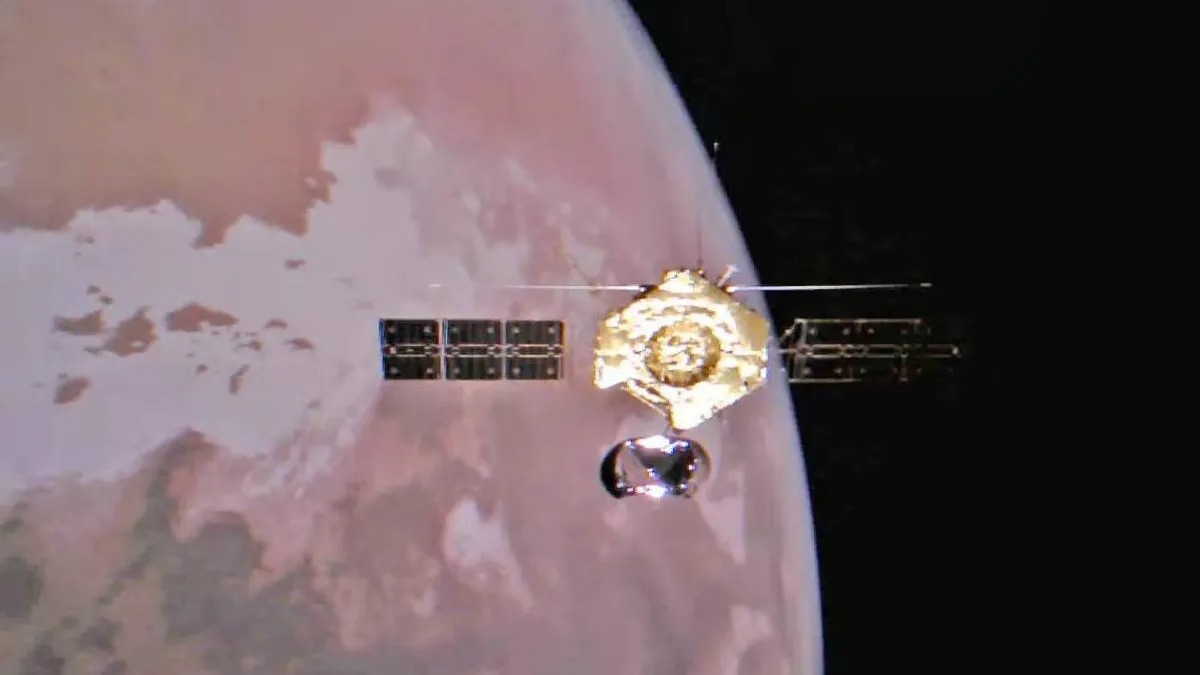China’s Tianwen-1 mission is celebrating its two-year anniversary. To mark this event, the spacecraft photographed the Phobos moon – a natural Martian moon of irregular shape, similar to potatoes. According to the Chinese state newspaper China Daily, a group of scientists calculated the time when the orbiter was relatively close to Phobos to make clear images of the moon in the state of the full moon.

Mars has two moons: Phobos and the smaller moon Deimos. Phobos is 27 kilometers wide and is dotted with impact craters and trenches. This moon will fall to Mars in a few million years due to its low orbit, which is constantly decreasing.
Achievement of “Tianwen-1” in two years in Mars orbit
The Tianwen-1 mission was launched on July 23, 2020, and was a great success for the National Space Administration of China. The spacecraft entered orbit around Mars in February 2021, after which it began to carry out its rather rich scientific program. It studied the geological structure of the planet, the characteristics of the surface layer and the distribution of water ice in it. The device also measured the parameters of the planet’s ionosphere, collected data on its climate and completed mapping of Mars.

In total, the Chinese envoy transmitted 1,040 GB of information to Earth. The orbiter also accompanied the lander and the Zhurong rover to Mars, making China the second country besides the United States to successfully operate a rover on the surface of the Red Planet.
According to CNSA representatives, Tianwen-1 will continue to observe Mars. The orbiter will be used to test on-board equipment and test the technology of air braking, which in the future will be used in the mission to deliver samples of Martian soil to Earth.
Earlier we reported how Perseverance sent an amazing video of a solar eclipse on Mars.
Follow us on Twitter to get the most interesting space news in time
https://twitter.com/ust_magazine
